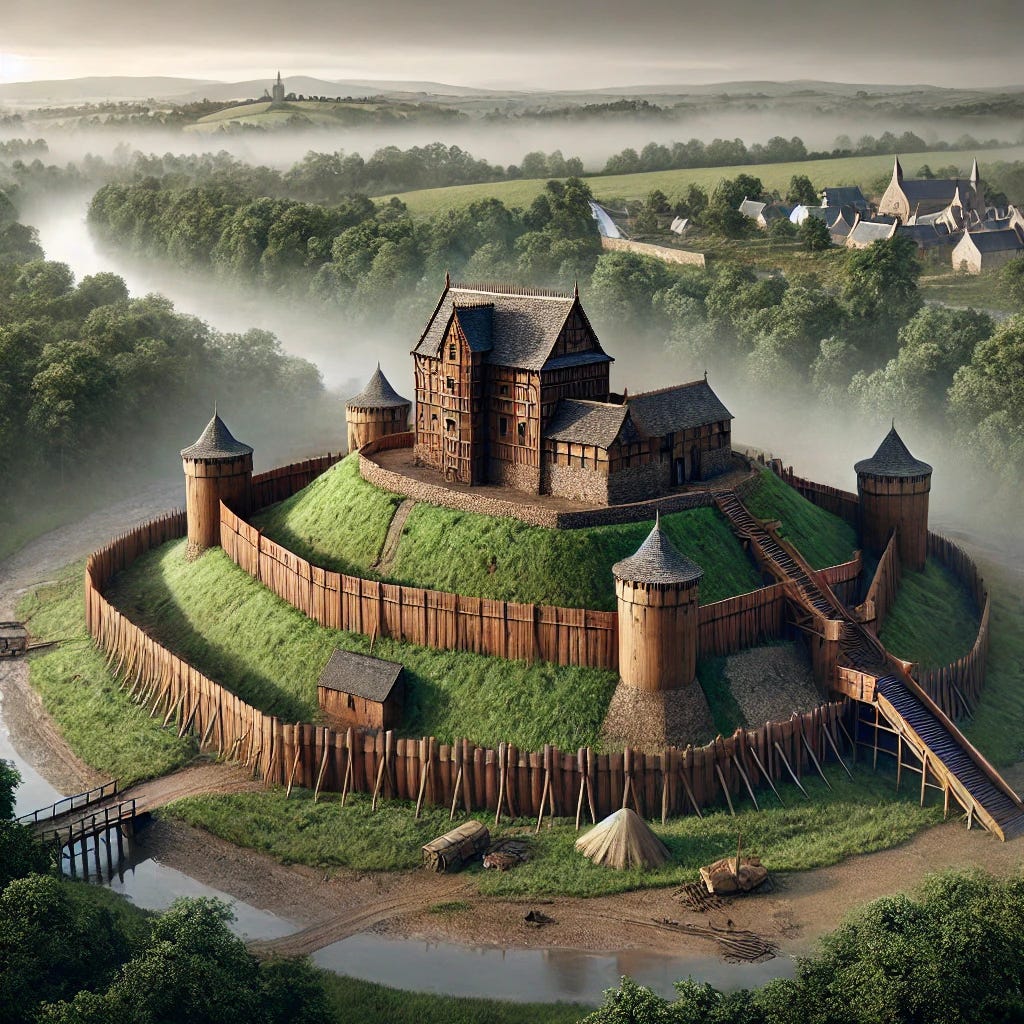The story of Kirkintilloch Castle is one of mystery, intrigue, and historical upheaval. Likely constructed by the influential Comyn family during the 13th century, this fortress played a significant role in Scotland’s medieval history. However, unlike many other castles that remain visible reminders of their era, Kirkintilloch Castle has vanished, leaving behind only questions and theories. How did this once-mighty structure disappear so completely, and what clues remain to help unravel its fate?
The Castle's Origins: A Fortress on Ancient Grounds
Kirkintilloch Castle is thought to have been built on the Peel, a site with a long history of strategic importance. The Peel’s name, derived from the Scots term for “a place of strength,” hints at its use long before the medieval period. Archaeological evidence and historical accounts suggest the Romans established a fort at the site, leveraging its elevated position and natural defenses.
By the 13th century, the area came under the control of the Comyns, a powerful and politically connected family. They likely chose the Peel for their stronghold, constructing Kirkintilloch Castle on or near the remains of the Roman fort. The Comyns were staunch allies of the English Crown, a connection that would ultimately lead to their downfall during Scotland’s Wars of Independence.
The exact details of the castle’s construction remain unclear, as few records survive from this period. However, it was likely a motte-and-bailey design, typical of the era, with wooden or stone defenses built atop a raised earthwork. Its location near the Forth and Clyde Canal, though long predating the waterway, would have made it a key stronghold for controlling movement through the region.
The Wars of Independence: The Castle's Tumultuous History
Kirkintilloch Castle’s prominence also made it a target during Scotland’s Wars of Independence (1296–1328). The Comyns, once among the most powerful families in Scotland, became embroiled in political strife when Robert the Bruce sought to claim the Scottish throne. This conflict culminated in the infamous killing of John “Red” Comyn by Bruce in 1306, an event that dramatically altered the course of Scottish history.
By this time, Kirkintilloch Castle was under English control, likely garrisoned as part of Edward I’s strategy to dominate Scotland. Bruce and his supporters, determined to reclaim their homeland, launched a series of sieges against English-held castles, including Kirkintilloch. These campaigns were critical to dismantling England’s grip on Scotland.
One notable figure in these efforts was Bishop Robert Wishart, known as the “warlike bishop.” A staunch supporter of Scottish independence, Wishart famously repurposed timber originally intended for Glasgow Cathedral to construct siege engines used in the assault on Kirkintilloch Castle. This act of defiance drew the ire of both King Edward and the Pope, but it underscored the desperate and resourceful nature of the Scots’ fight for freedom.
The siege of Kirkintilloch Castle likely resulted in its capture by Scottish forces, though the exact details remain obscure. Following its recapture, Bruce’s forces may have deliberately dismantled the fortress to prevent it from falling back into English hands. This practice, known as "slighting," was a common tactic during the period.
Why Did the Castle Vanish?
While many medieval castles remain as ruins or have been incorporated into modern settlements, Kirkintilloch Castle seems to have disappeared almost entirely. Its absence raises intriguing questions: Why did such a significant structure vanish without a trace? Several factors likely contributed to its fate:
1. Deliberate Destruction
The most likely explanation is that Bruce’s forces destroyed the castle after reclaiming it. By dismantling its defenses, they ensured it could not be used by their enemies again. This systematic destruction may have left only buried foundations, which would have been further obscured over time.
2. Material Recycling
Medieval Scotland faced a constant demand for building materials, and abandoned castles often served as convenient sources of stone and timber. Local communities may have scavenged Kirkintilloch Castle’s remains for use in other construction projects, gradually erasing its presence.
3. Natural Erosion
The Peel’s location near wetlands and the modern Forth and Clyde Canal likely contributed to the erosion of any remaining structures. Over centuries, the combination of soil movement, vegetation growth, and weathering could have buried or destroyed the castle’s remnants.
4. Urban Development
As Kirkintilloch grew from a medieval settlement into a modern town, new construction likely encroached on the castle site. Roads, houses, and other infrastructure may now occupy the area where the castle once stood, further complicating efforts to locate its remains.
5. Lack of Historical Documentation
Unlike more prominent castles with extensive written records, Kirkintilloch Castle suffers from a paucity of historical accounts. Without detailed descriptions or maps, identifying its exact location and features becomes an exercise in speculation.
Clues and Speculations
Despite its disappearance, traces of Kirkintilloch Castle may still exist beneath the surface. Archaeological surveys in the Peel area have revealed signs of medieval activity, though no definitive evidence of the castle itself has been found. Historical maps and documents provide some guidance, suggesting the castle was located near the modern Peel Park, but they often raise more questions than answers.
Local legends also contribute to the mystery. Stories passed down through generations hint at buried treasures or forgotten chambers, fueling the imagination of amateur historians and treasure hunters. However, these tales often lack concrete evidence and remain part of the castle’s folklore.
Legacy of Kirkintilloch Castle
Although Kirkintilloch Castle has vanished from the landscape, its legacy endures in the stories of those who fought for control of it. It played a pivotal role in Scotland’s Wars of Independence, serving as both a fortress and a symbol of power. Figures like Robert the Bruce and Bishop Wishart are forever tied to its history, their actions at the castle reflecting the resilience and determination of the Scottish people.
Today, the Peel serves as a public park, a tranquil space that belies its turbulent past. Visitors can walk the grounds and imagine the battles that once raged there, while historians and archaeologists continue to piece together the puzzle of Kirkintilloch Castle.





